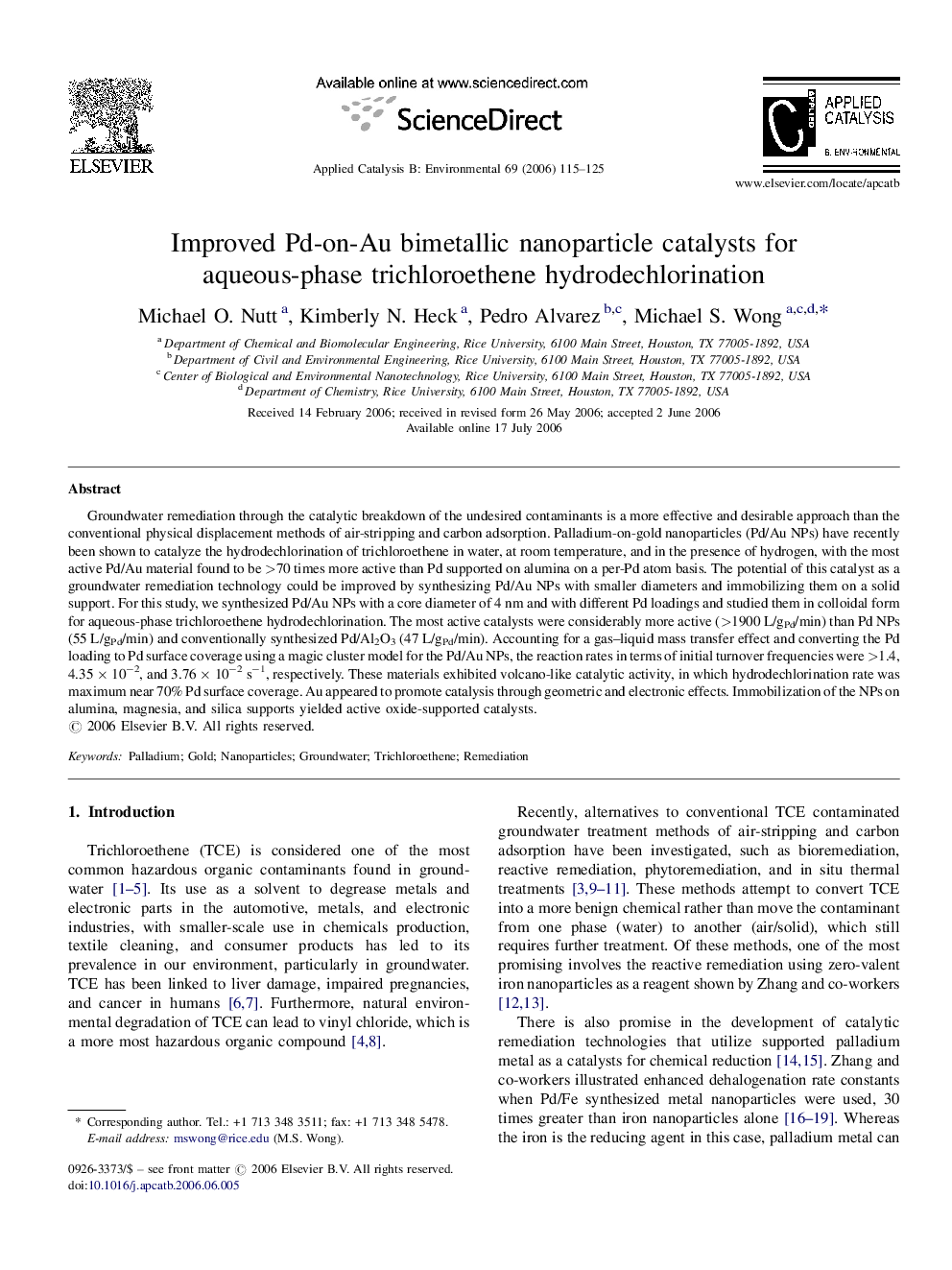| Article ID | Journal | Published Year | Pages | File Type |
|---|---|---|---|---|
| 48747 | Applied Catalysis B: Environmental | 2006 | 11 Pages |
Groundwater remediation through the catalytic breakdown of the undesired contaminants is a more effective and desirable approach than the conventional physical displacement methods of air-stripping and carbon adsorption. Palladium-on-gold nanoparticles (Pd/Au NPs) have recently been shown to catalyze the hydrodechlorination of trichloroethene in water, at room temperature, and in the presence of hydrogen, with the most active Pd/Au material found to be >70 times more active than Pd supported on alumina on a per-Pd atom basis. The potential of this catalyst as a groundwater remediation technology could be improved by synthesizing Pd/Au NPs with smaller diameters and immobilizing them on a solid support. For this study, we synthesized Pd/Au NPs with a core diameter of 4 nm and with different Pd loadings and studied them in colloidal form for aqueous-phase trichloroethene hydrodechlorination. The most active catalysts were considerably more active (>1900 L/gPd/min) than Pd NPs (55 L/gPd/min) and conventionally synthesized Pd/Al2O3 (47 L/gPd/min). Accounting for a gas–liquid mass transfer effect and converting the Pd loading to Pd surface coverage using a magic cluster model for the Pd/Au NPs, the reaction rates in terms of initial turnover frequencies were >1.4, 4.35 × 10−2, and 3.76 × 10−2 s−1, respectively. These materials exhibited volcano-like catalytic activity, in which hydrodechlorination rate was maximum near 70% Pd surface coverage. Au appeared to promote catalysis through geometric and electronic effects. Immobilization of the NPs on alumina, magnesia, and silica supports yielded active oxide-supported catalysts.
